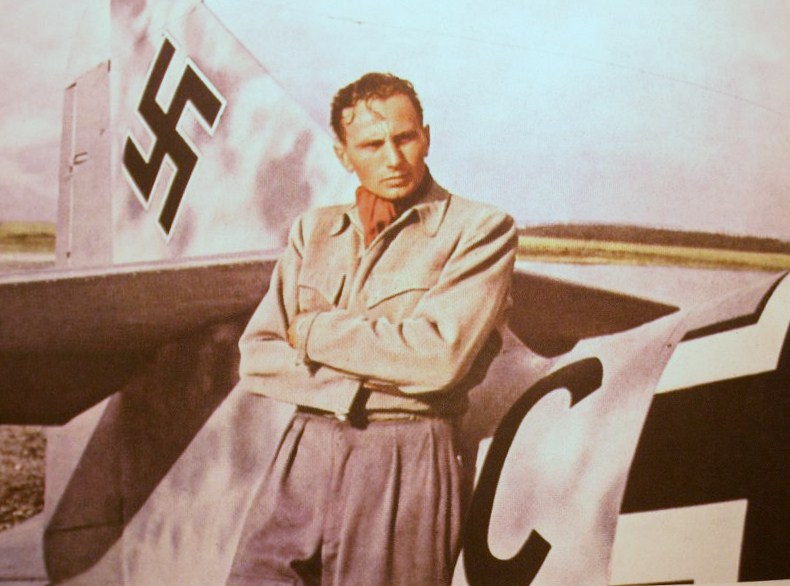
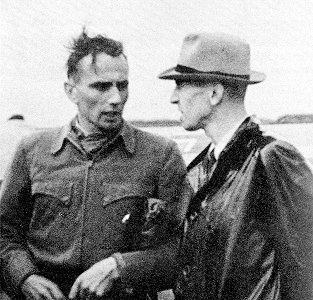
18 July 1942: In the late 1930s, Germany began developing a fighter powered by a turbojet engine. In early 1942 the first two prototypes of the Messerschmitt Me 262 began flight testing. They had two BMW 003 jet engines mounted on the wings, but for safety, a piston engine and propeller were mounted in the nose.
At 8:40 a.m. on 18 July 1942, V3, the third prototype, call sign PC+UC, made its first pure-jet flight when it took off from Leipheim, Bavaria, with Messerschmitt’s Chief Test Pilot, Flugkapitän Fritz Wendel. (The first true turbojet-powered aircraft, the Heinkel He 178 V-1, first flew almost three years earlier, 27 August 1939).
This prototype was powered by two Junkers Jumo 004 turbojet engines. The Jumo 004 had an eight-stage axial flow compressor, six straight through combustion chambers and a single-stage turbine. It produced 1,850 pounds of thrust (8.23 kilonewtons).
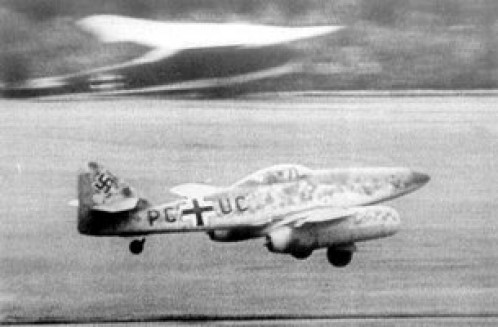
There were problems created by the airplane’s use of a tailwheel configuration. Turbulence from the wings and reflected jet exhaust blanked out the tail surface. When the Me 262 prototype reached flying speed, Wendel tapped the brakes. The tail popped up, free of the turbulence, and the jet fighter took off. Beginning with the fifth prototype, V5, all Me 262s were built with tricycle landing gear.
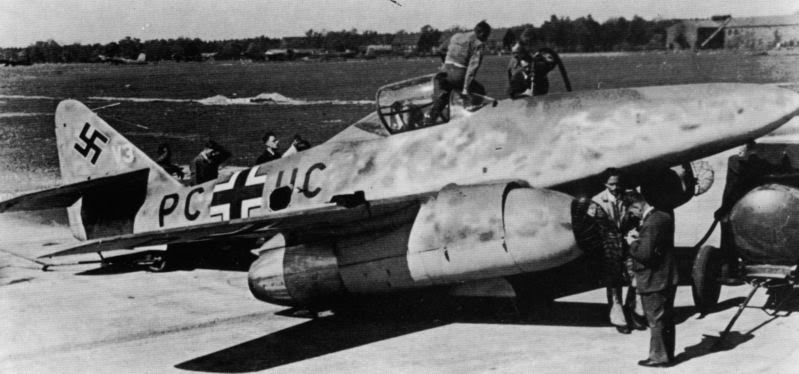
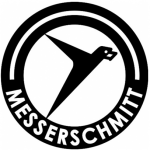
The Me-262 wings had 6° dihedral. The leading edges were swept aft to 20°, while the trailing edges of the inner panels swept forward 8½° to the engine nacelle, then outboard of the engines, aft 5°. The purpose of the sweep was to keep the airplane’s aerodynamic center close to the center of gravity, a technique first applied to the Douglas DC-2. The total wing area was 21.7 square meters (233.6 square feet).
Messerschmitt test pilot Hans Fay told Allied interrogators that, for acceptance, the production Me 262 was required to maintain a minimum of 830 kilometers per hour (515 miles per hour) in level flight, and 950 kilometers per hour (590 miles per hour) in a 30° dive. The fighter’s cruise speed was 750 kilometers per hour (466 miles per hour).
A number of factors influenced the Me 262’s maximum range, but Fay estimated that the maximum endurance was 1 hour, 30 minutes. U.S. Air Force testing establish the range as 650 miles (1,046 kilometers) and service ceiling at 38,000 feet (11,582 meters).
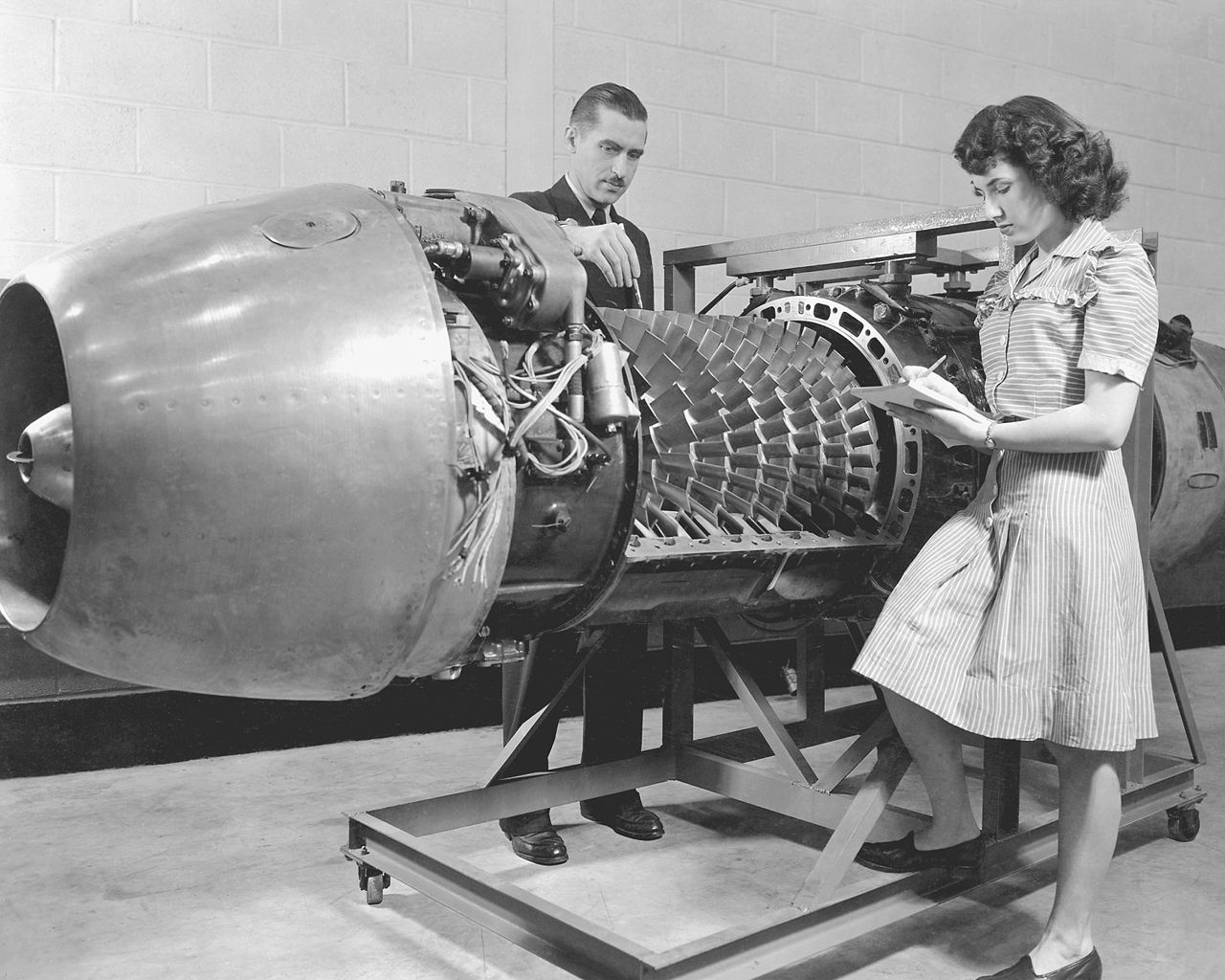
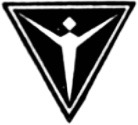
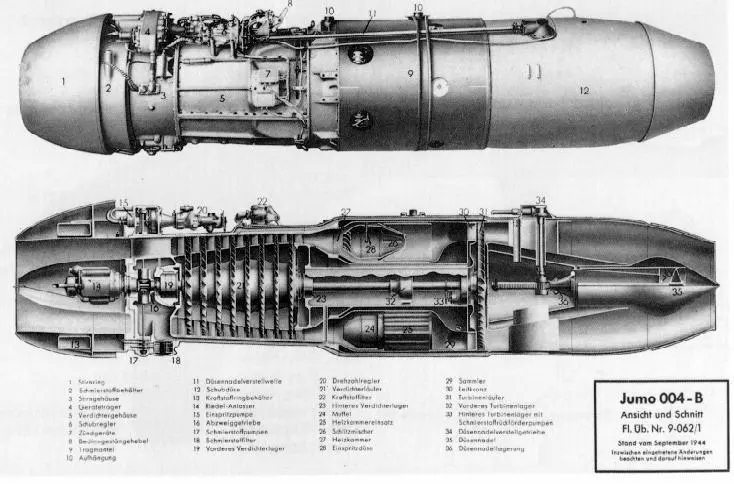
The Me 262 A-1 was armed with four Rheinmetall-Borsig MK 108 30 mm autocannons with a total of 360 rounds of ammunition. (The Me 262 A-2 had just two autocannons with 160 rounds.) It could also be armed with twenty-four R4M Orkan 55 mm air-to-air rockets. Two bomb racks under the fuselage could each be loaded with a 500 kilogram (1,102 pounds) bomb.
1,430 Me 262s were produced. They first entered service during the summer of 1944. Luftwaffe pilots claimed 542 Allied airplanes shot down with the Me 262.
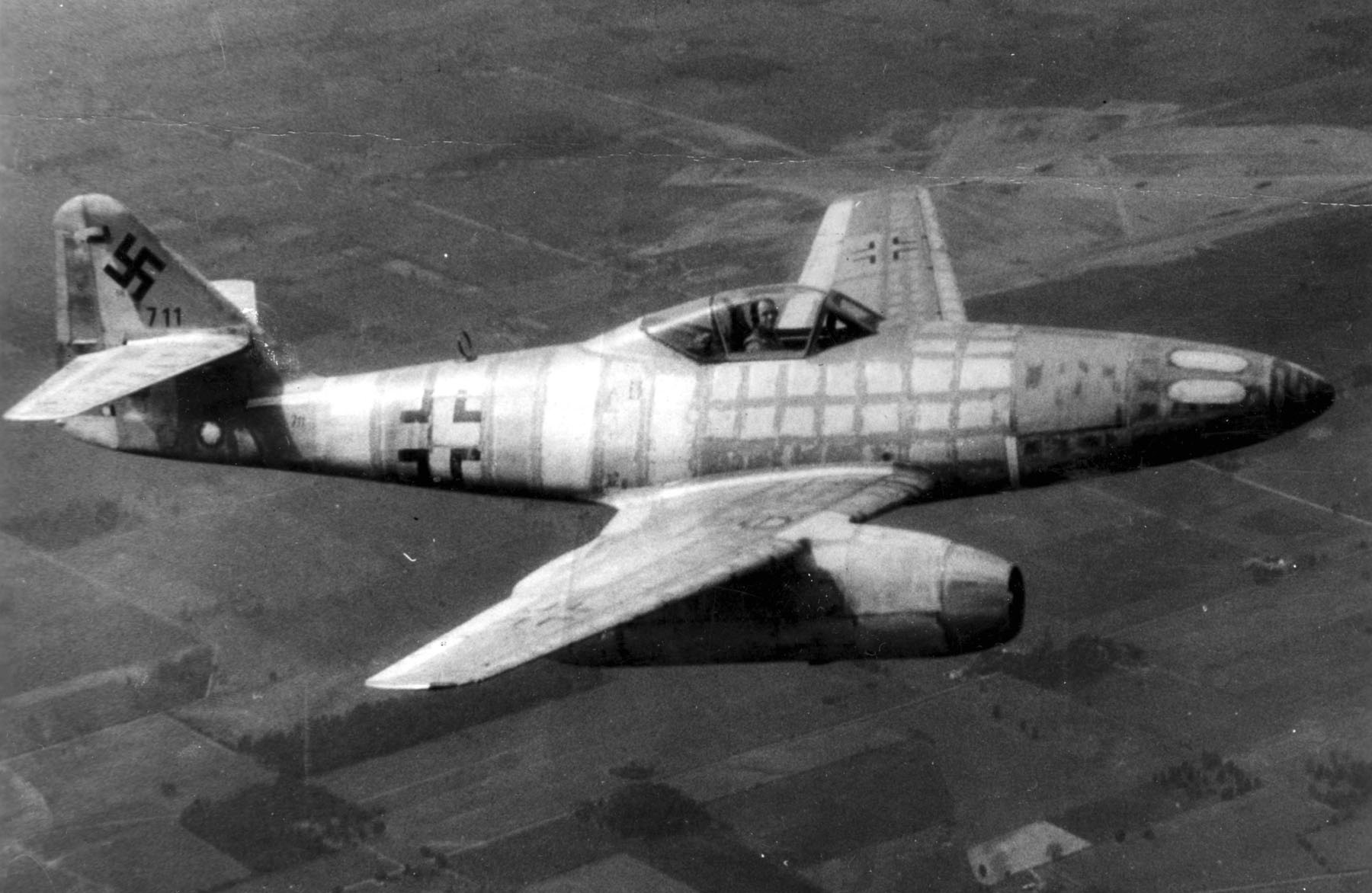
© 2023, Bryan R. Swopes